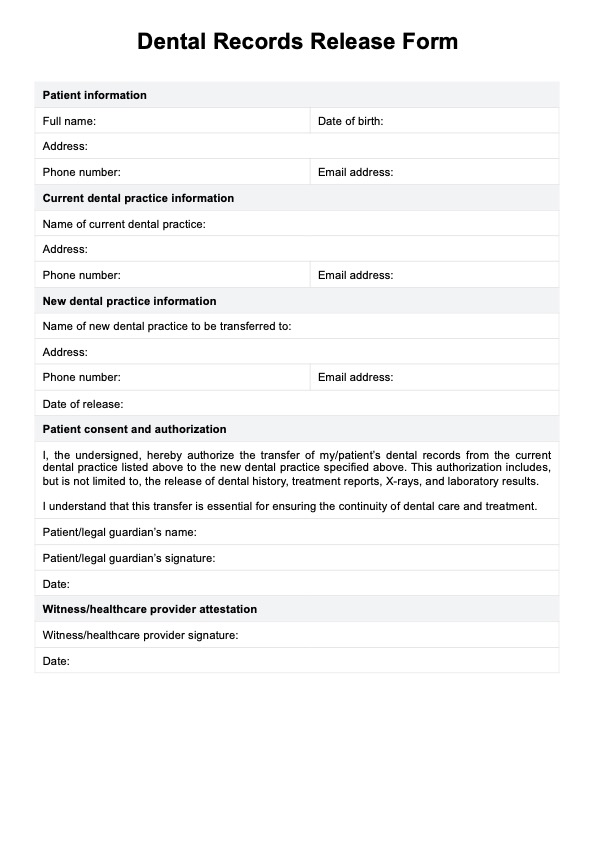A dental release form is a document that allows a patient to authorize the transfer of their dental records from one dental practice to another.

Use our Dental Records Release Form to help smoothen the sharing of patient dental information with other dental specialists and facilities when needed.
A dental release form is a document that allows a patient to authorize the transfer of their dental records from one dental practice to another.
Consent forms are crucial for dental practices because they record that patients have been informed and consented to treatment. They are a critical part of patient care and legal compliance, helping to protect both the patient and the practice.
In certain circumstances, a patient's representative, such as a parent, legal guardian, or holder of a medical power of attorney, can sign a dental release form on behalf of the patient. This is common if the patient is a minor, incapacitated, or otherwise unable to provide informed consent by themselves.
EHR and practice management software
*No credit card required
Free
$0/usd
Unlimited clients
Telehealth
1GB of storage
Client portal text
Automated billing and online payments